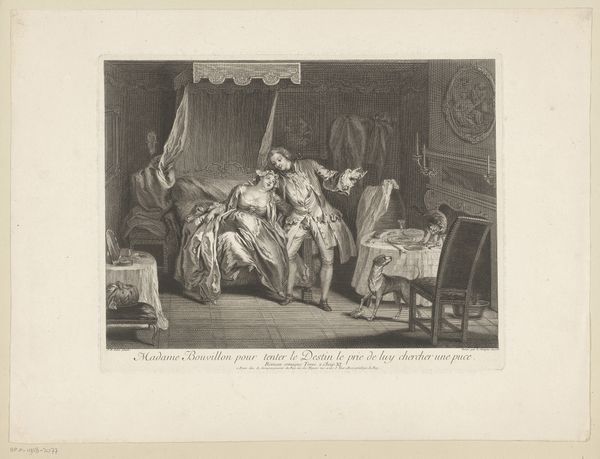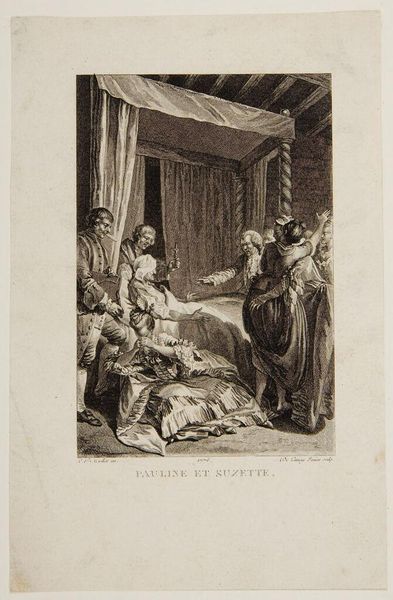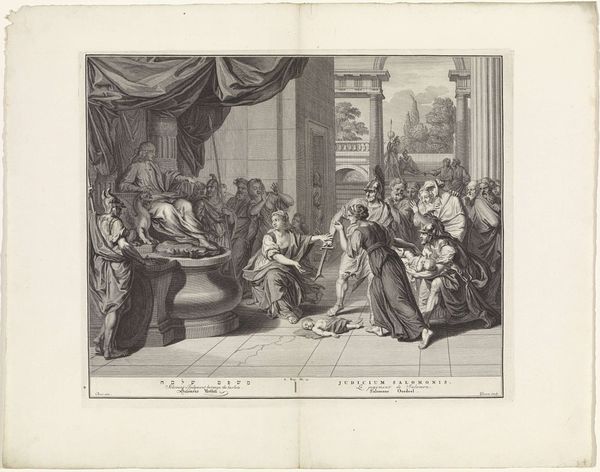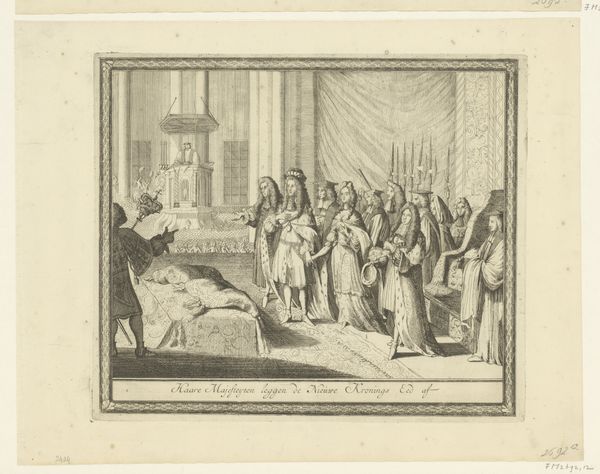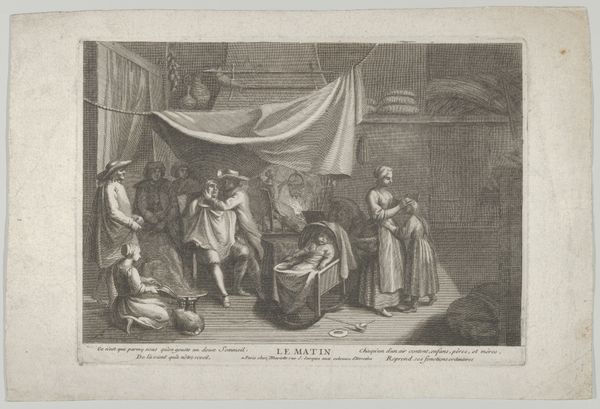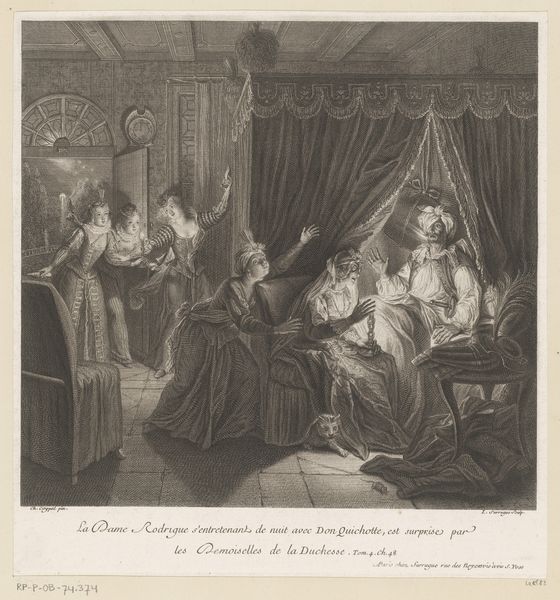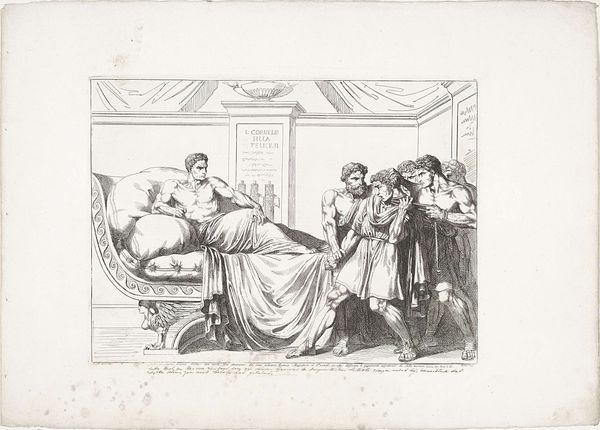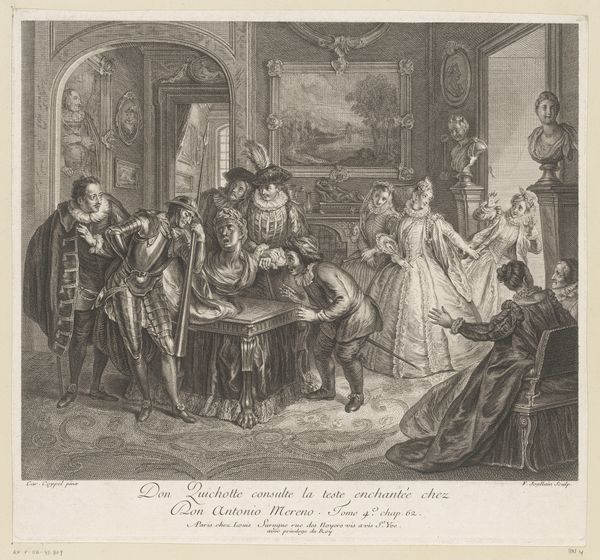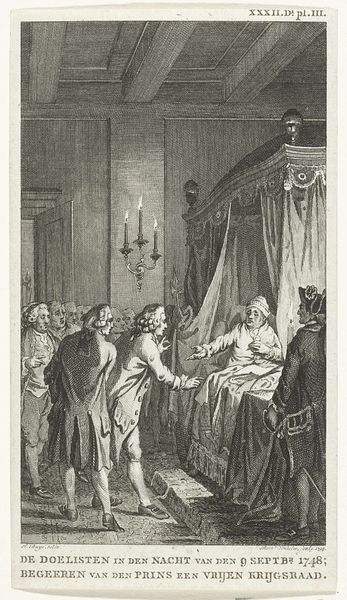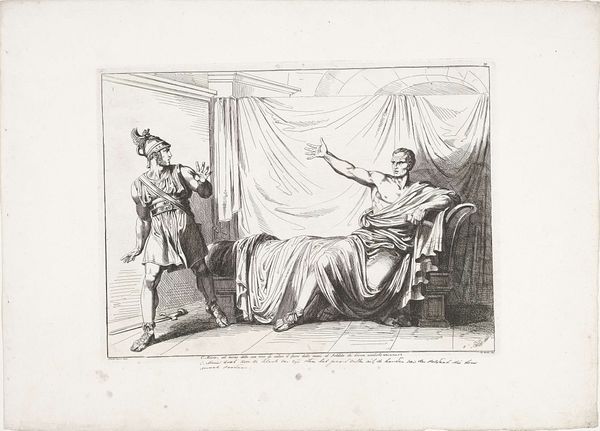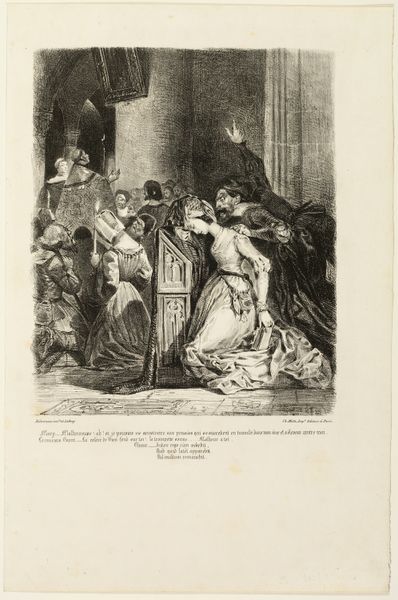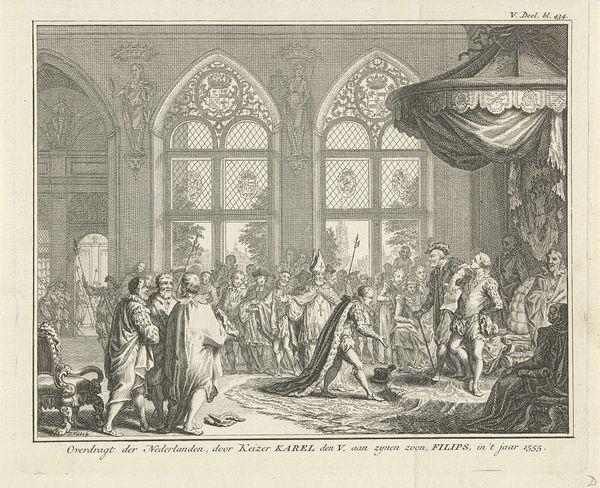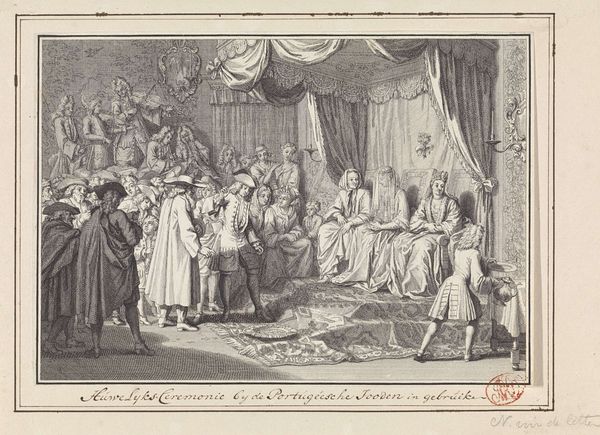
drawing, lithograph, print, etching, paper, engraving
#
portrait
#
drawing
#
narrative-art
#
neoclassicism
#
lithograph
# print
#
etching
#
figuration
#
paper
#
romanticism
#
genre-painting
#
history-painting
#
engraving
Dimensions: 208 × 274 mm (image); 255 × 336 mm (sheet)
Copyright: Public Domain
Curator: Looking at this image, it strikes me how we so rarely portray death so intimately anymore. Editor: It’s an emotionally dense image, isn't it? Cold, but with flashes of feverish intensity in the faces. What is it exactly? Curator: This work is simply titled "Death," attributed to Langlumé. While undated, its style places it somewhere in the transitional period between Neoclassicism and Romanticism. You can see echoes of both in this lithograph and etching. Editor: Right, that slightly stiff arrangement mixed with the florid sorrow... it's like watching grief perform in a tableau vivant. It reminds me of bad theatre—but in a good way, if that makes sense. Look at those guys standing in the background! Melodramatic much? Curator: Exactly. But think about the symbols present. The figures are framed within this rigid grid structure. Note, too, how the space beyond mirrors contains life--another grouping. This creates a dialectic of mortality and legacy. Death occurs within boundaries but does not define the total picture. Editor: Okay, okay, I’m with you. There's definitely this controlled composition fighting against the rawness of what's happening, even as everyone is grieving at very different levels. Do you notice, also, the one guy calmly observing--writing even? Almost too much decorum in the face of absolute ending. It seems so… French, I hate to stereotype! Curator: Well, keep in mind the history-painting tradition, of which this feels like a close cousin. There's a clear intent to impart a message, maybe about the importance of stoicism or about duty amid sorrow. It's a public performance even within the intimacy of a death chamber. Editor: The attention to light and shadow certainly heightens the drama. Overall, despite the somewhat academic style, there's something truly unsettling about the work's quiet intensity. It pulls you right up to that bedside to watch someone die, in real time. That sounds harsh, but I think it's right. Curator: I find it striking that "La Mort," in the end, also prompts meditation about the things that abide: social continuity, artistic representation itself. What narratives do we build around death? This artwork is only one such artifactual attempt, I'd wager. Editor: Absolutely, it’s a potent mix. It has forced us to question this historical moment’s approach to mortality… I will probably mull this over more, to be fair!
Comments
No comments
Be the first to comment and join the conversation on the ultimate creative platform.

